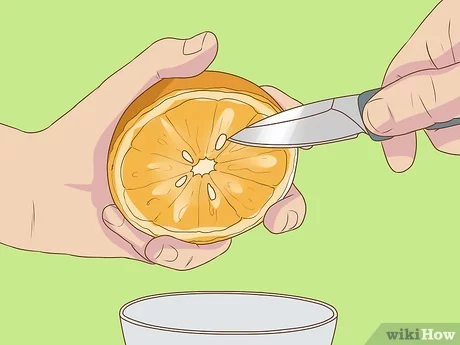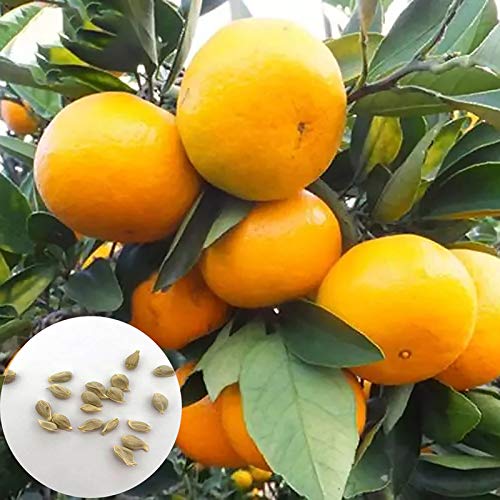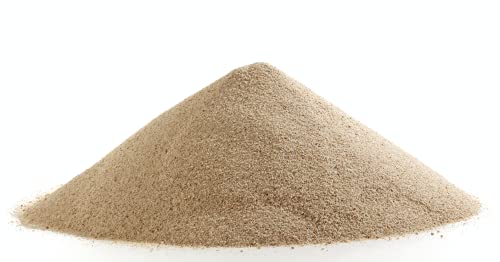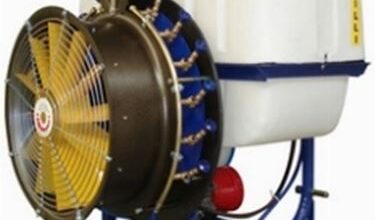How to Germinate Orange Seeds: [Time, Actions, Place and Steps]

 Germinating orange seeds is a process that can be very enriching in life as a small farmer.
Germinating orange seeds is a process that can be very enriching in life as a small farmer.
It has a high effectiveness rate, although it is true that it takes time for you to achieve those long-awaited results.
The main thing is to understand that the seeds cannot dry out, because if they do, they will not germinate. This applies to all citrus.
Now, what are the data you need to know to get down to work? Let’s review them below.
How long does it take for an orange seed to germinate?
The germination time, as such, covers a variable time of 20 to 30 days, since it is one of the most delayed species to carry out this process. To this period we must add the 15 days that will spend in stratification that will speed up the work.
Therefore, it could be said that in general terms it will last up to 45 days. If the seed is allowed to follow its natural course and go through the winter period without human intervention, this time could be extended for several months.

The important thing is to give it its time because the orange tree, like other citrus fruits, needs to have the fulfillment of each stage to develop healthy and strong.
What actions favor the germination of orange seeds?
 The main action that favors the process to be carried out more quickly is to subject the seeds to a cold process, as if it were winter.
The main action that favors the process to be carried out more quickly is to subject the seeds to a cold process, as if it were winter.
It is a method that somehow «deceives» the anatomy of the seed, making it readjust its germination calendar.
Logically, this process will only be necessary at times of the year other than autumn and winter, because if you are at that time it will not be necessary. Just leaving them outside will be more than enough, although you will have to wait longer to use them.
Where is the best place to germinate an orange seed?
Orange seeds are capable of germinating in different environments. The traditional thing, after applying the stratification, is the substrate.In some cases, specialists recommend using cotton with absorbent paper because it prevents the proliferation of fungi that are usually common in the substrate.
For this reason, it is important to ensure that the land used in the seedbeds is sterile, preferably new. A last option, although in itself the least favourable, is to make a union of common garden soil with sand.


The idea is to place the lowest layer of garden soil that will allow the roots to obtain nutrients when they are born. However, the seed will remain in the most superficial layer, which will be the sand, since this, due to its characteristics, is less prone to attack by pathogens.
How to germinate orange seeds?
Now the time has come to assess step by step what is the most effective system for orange seeds to germinate:
- Select the seeds you will use. These can come from an orange that you just ate. Take into account that pollination causes the seeds to have a genetic condition dependent on the characteristics of the father and mother, so the tree that will be born may not be identical to the one that gave you the oranges you ate.
- Prepare a plastic bag (the kind with an airtight seal) and fill it with wet sand. Insert the seeds there, ensuring that they are covered with sand on all sides.
- Place the bag inside the refrigerator, at the bottom, where it receives cold but not excessively. This part of the process will give it low temperature and humidity, as if it were going through the winter season. It is used in various types of seeds and is called layering.
- Remove the bag from the refrigerator after 15 days. After this time, the seeds will have received enough cold to set off the alarm “it is time to grow”.
- Prepare a seedbed with a substrate that is clean, preferably new to reduce the chances of fungal growth. The seed does not need to be buried, but just covered with a light layer of substrate.
- Water with enough water so that the entire substrate is moistened but no puddles are produced. Keep it moist until you notice the seedling beginning to emerge. In this first phase you can keep it indoors, but when the seedling begins to appear, you will have to move it outside so that it receives sunlight.
When the plant has the appropriate size and characteristics, it will be time to transplant it to the final space where it will be. As you can see, the germination process of an orange seed is not very complex, you just need to have order in the steps to ensure a good outcome.
Bibliographic references
- Orange is the new green , B Hernández Gómez – 2018 – dspace.umad.edu.mx
- The cultivation of citrus fruits, E González-Sicilia – 1968 – sidalc.net
- Evaluation of two biostimulants and substrates in the germination of Cleopatra mandarin (Citrus reshni) and Sour orange (Citrus aurantium), JM Moreira Moreno – 2019 – repository.unesum.edu.ec
- Influence of soil sterilization with different treatments, in the germination of sour orange (Citrus aurantium) in citrus, D Dueñas López – 1986 – sidalc.net
- EFFECT OF (GA3-NZn) ON THE GERMINATION OF ORANGE SEEDS ( Citrus sinensis)./ALICIA, MARIN MIRANDA, A MARIN MIRANDA – sidalc.net
Maybe you are also interested in:
- How often and how to water my potted orange tree?
- How often and how to drip irrigate my orange tree?
- 7 Pests that Affect your Orange Trees: [Detection, Causes and Solutions]
- How to Fertilize Naranjo: [Components, Needs and Importance]
- Potted Orange Tree Care: [Soil, Humidity, Pruning and Problems]
- Orange Tree Care: [Soil, Humidity, Pruning and Problems]
- Orange Tree Diseases: [Characteristics, Types, Detection and Treatment]
- Orange Tree Cuttings: [Grafts, Time, Rooting and Planting]
- Pruning the Orange Tree in a Pot: [Importance, Time, Tools, Considerations and Steps]
- Orange Tree Pruning: [Dates, Ways to Do It and Tools]
- Pruning a Sick Orange Tree: [Importance, Season, Tools, Considerations and Steps]
- Orange Tree Irrigation: [Needs, Frequency and Procedure]
- Most Famous and Delicious Orange Types and Varieties



![Photo of Cuttings of Drácena Marginata in Water: [Concept, Time, Rooting and Planting]](https://www.complete-gardening.com/wp-content/uploads/2022/08/cuttings-of-dracena-marginata-in-water-concept-time-rooting-and-planting-390x220.jpg)
![Photo of Cabbage Fly (Phorbia brassicae): [Characteristics, Detection, Effects and Treatment]](https://www.complete-gardening.com/wp-content/uploads/2021/06/Que-es-la-mosca-de-la-col-390x220.jpg)